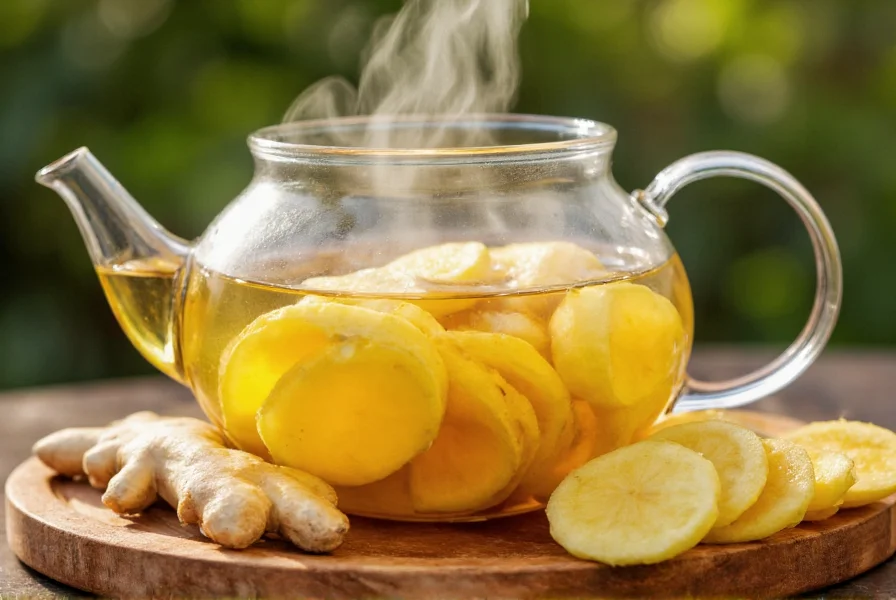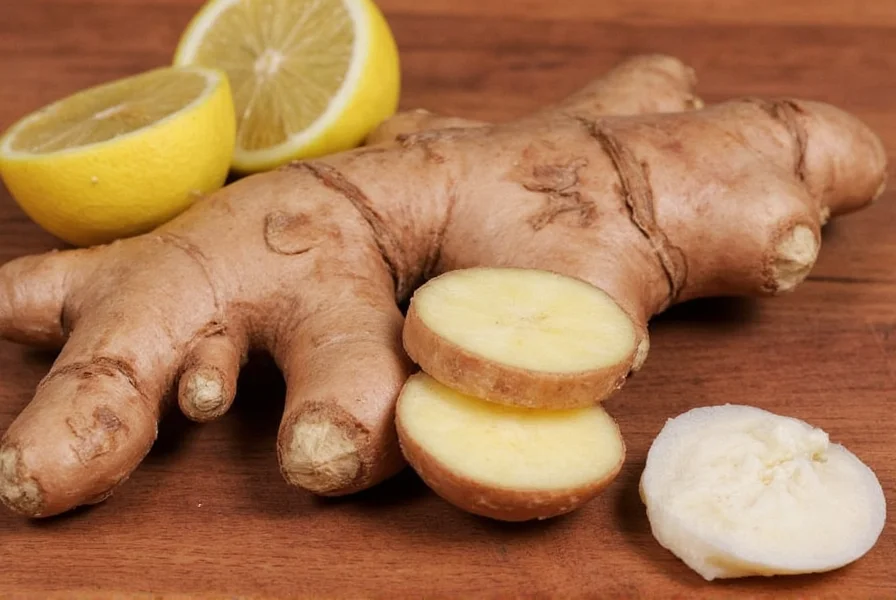Nothing transforms a dish like fresh ginger root. This knobby rhizome brings zesty warmth to both sweet and savory creations while offering science-backed health benefits. Unlike powdered ginger, fresh ginger contains active compounds like gingerol that provide distinctive flavor and potential wellness advantages.
Why Fresh Ginger Root Outperforms Powdered Alternatives
While convenient, ground ginger lacks the complex flavor profile and higher concentration of bioactive compounds found in fresh ginger root. Fresh ginger contains approximately 4% gingerol by weight compared to processed ginger's reduced potency. This difference becomes especially noticeable in raw applications like marinades, dressings, and fresh juices where the vibrant, spicy-sweet notes shine through.
Selecting and Storing Ginger Root Properly
Choose firm, smooth ginger with tight skin and minimal wrinkles. Avoid pieces with soft spots or visible mold. For optimal storage, keep unpeeled ginger in an airtight container in the refrigerator's crisper drawer for up to three weeks. For longer preservation, freeze whole or sliced ginger in a freezer bag for up to six months—frozen ginger grates beautifully without thawing.
Essential Preparation Techniques
Peeling ginger requires minimal effort when using the right technique. Instead of a vegetable peeler, use the edge of a spoon to scrape away the thin skin—this method removes only the outer layer while preserving maximum flesh. For fine grating, freeze ginger for 20 minutes first to firm the texture. When juicing ginger, wrap grated ginger in cheesecloth and squeeze firmly to extract maximum liquid.
| Preparation Method | Best For | Ratio to Powder |
|---|---|---|
| Fresh grated | Stir-fries, marinades, dressings | 1 tbsp fresh = 1/4 tsp powder |
| Thinly sliced | Teas, braises, steamed dishes | 1/4 inch slices = 1/2 tsp powder |
| Finely minced | Sauces, baked goods, rubs | 1 tsp minced = 1/8 tsp powder |
15 Tested Ginger Root Recipes
Revitalizing Ginger Beverages
Immunity-Boosting Fresh Ginger Tea
This simple ginger root tea recipe for cold relief requires just three ingredients. Peel and slice 1 inch of fresh ginger, add to 2 cups boiling water, and simmer for 10 minutes. Strain into a mug and add 1 tablespoon raw honey and the juice of half a lemon. The gingerol content provides natural anti-inflammatory benefits while the lemon adds vitamin C.

Ginger-Lemon Detox Water
For a refreshing hydrating beverage, thinly slice 1/2 inch ginger and combine with 4 cups cold water, 1 sliced cucumber, and juice of 1 lemon. Refrigerate for at least 4 hours to allow flavors to infuse. This no-cook ginger water recipe provides subtle flavor without added sugars.
Savory Ginger Creations
Classic Ginger Stir-Fry Sauce
Grate 2 tablespoons fresh ginger and combine with 3 tablespoons soy sauce, 1 tablespoon rice vinegar, 1 tablespoon honey, 1 minced garlic clove, and 1 teaspoon sesame oil. This versatile ginger stir fry sauce recipe works perfectly with chicken, beef, or tofu. For authentic flavor, add the sauce during the last two minutes of cooking to preserve ginger's bright notes.
Ginger-Garlic Noodle Soup
Simmer 3 cups chicken or vegetable broth with 2 inches sliced ginger, 3 garlic cloves, and 1 sliced scallion for 15 minutes. Strain and return to heat, adding cooked noodles, shredded chicken, and bok choy. This ginger root soup recipe provides comforting warmth with minimal preparation time.
Baking with Fresh Ginger
Moist Ginger Spice Cake
Grate 1/4 cup fresh ginger and fold into your favorite spice cake batter before baking. The fresh ginger root baking recipe creates superior moisture and complex flavor compared to dried ginger. For enhanced taste, brush the cooled cake with ginger syrup made from 1/4 cup fresh ginger juice and 1/4 cup sugar simmered for 5 minutes.
Ginger-Pear Muffins
Combine 2 grated pears with 3 tablespoons freshly grated ginger, 1 1/2 cups flour, 1/2 cup sugar, 1 egg, and 1/3 cup oil. These breakfast-friendly muffins showcase how fresh ginger complements fruit naturally. The ginger root muffin recipe yields tender crumb with balanced sweetness.
Adjusting Ginger Intensity for Different Palates
Ginger's heat level varies significantly between pieces. To moderate intensity, remove the fibrous core running through the center of each knob. For milder flavor, blanch grated ginger in boiling water for 30 seconds before using. When cooking for children or sensitive palates, start with half the recommended amount and adjust to taste. Remember that ginger intensifies slightly during cooking, so add it toward the end of preparation for brighter flavor.
Common Ginger Substitutions and Solutions
Out of fresh ginger? Substitute 1/4 teaspoon ground ginger per tablespoon of fresh, though flavor will differ. For recipes requiring ginger juice, use 1 tablespoon lemon juice plus a pinch of ground ginger. When a recipe calls for candied ginger, replace with 1 tablespoon honey plus 1/2 teaspoon fresh grated ginger. These ginger root substitution solutions maintain flavor balance when fresh ginger isn't available.
Maximizing Ginger's Culinary Potential
Understanding how to properly incorporate fresh ginger root transforms ordinary dishes into extraordinary creations. The key lies in matching preparation methods to specific recipes—grated for marinades, sliced for infusions, minced for baked goods. By following these tested ginger root recipes and techniques, you'll consistently achieve balanced flavor and maximize the natural benefits of this versatile ingredient.
How much fresh ginger equals ground ginger in recipes?
One tablespoon of freshly grated ginger equals approximately 1/4 teaspoon of ground ginger. This conversion works for most cooking applications, though fresh ginger provides brighter flavor and more complex notes than powdered alternatives.
What's the best way to peel ginger root without wasting flesh?
Use the edge of a spoon to scrape away ginger's thin skin. This method removes only the outer layer while preserving maximum flesh. The spoon's curvature follows ginger's natural shape better than vegetable peelers, reducing waste by up to 30% compared to traditional peeling methods.
Can I freeze fresh ginger root for later use?
Yes, freezing preserves ginger's quality effectively. Store whole or sliced ginger in an airtight container or freezer bag for up to six months. Frozen ginger grates beautifully without thawing, making it convenient for recipes requiring grated ginger. The freezing process doesn't significantly impact gingerol content or flavor profile.
Why does my ginger stir-fry taste bitter?
Bitterness typically occurs when ginger burns during high-heat cooking. To prevent this, add ginger during the last 1-2 minutes of stir-frying rather than at the beginning. Alternatively, blanch grated ginger in boiling water for 30 seconds before using to mellow its intensity while preserving flavor.
How can I reduce ginger's heat in recipes?
Remove the fibrous core running through the center of each ginger knob, as it contains higher concentrations of spicy compounds. For milder flavor, blanch grated ginger in boiling water for 30 seconds before using. Start with half the recommended amount and adjust to taste, remembering that ginger intensifies slightly during cooking.











 浙公网安备
33010002000092号
浙公网安备
33010002000092号 浙B2-20120091-4
浙B2-20120091-4